
Scopri come funziona il trattamento di FIVET
Immediatamente senza aspettare
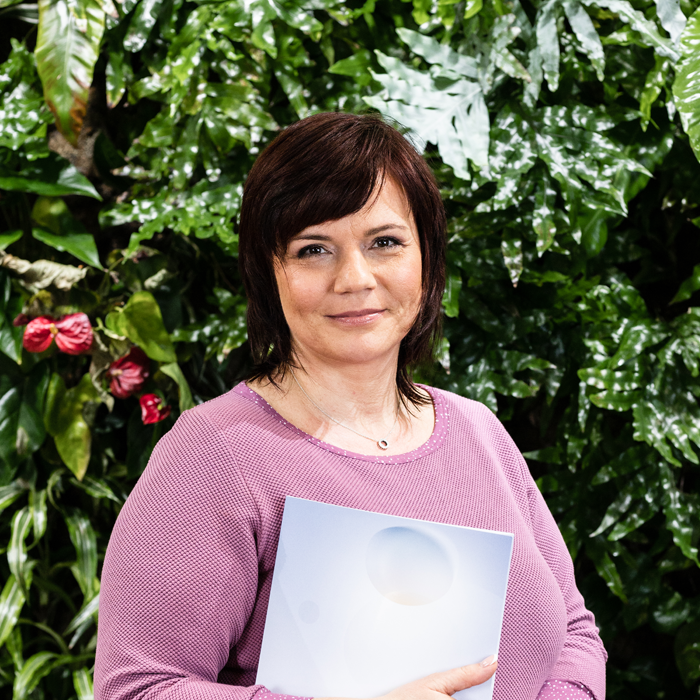
Consultazione online con il coordinatore/medico
Fill in our contact form or book an online consultation to take the first step towards happiness.
1 giorno in clinica

Consultazione iniziale, ecografia, prelievo di sangue, test genetico, requisiti del donatore
Eseguiremo tutti gli esami necessari, compresi i test genetici (se indicati). Prima di tornare a casa, scriverete con il coordinatore i requisiti del donatore.
8-12 giorni a casa
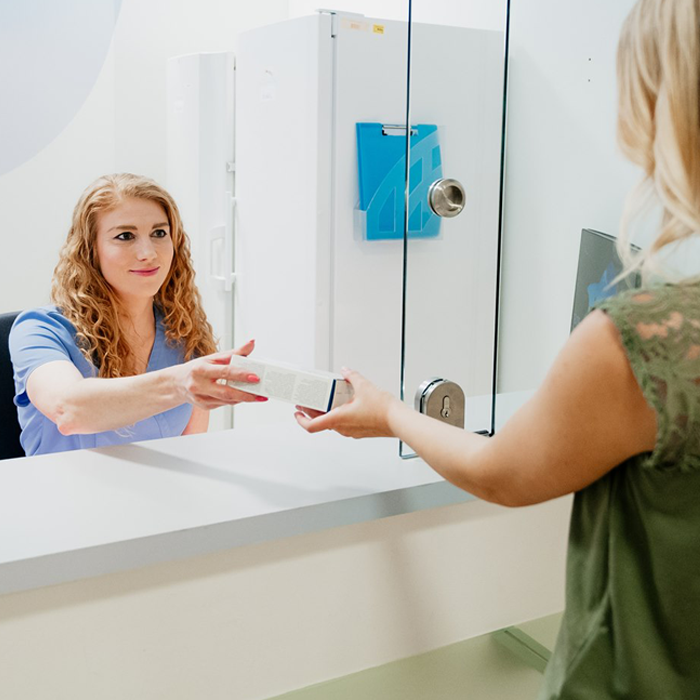
Applicazione semplice e indolore dei preparati ormonali
Quando tornate a casa, vi verranno somministrati dei farmaci da iniziare ad applicare dal primo giorno del ciclo.
1 giorno in clinica
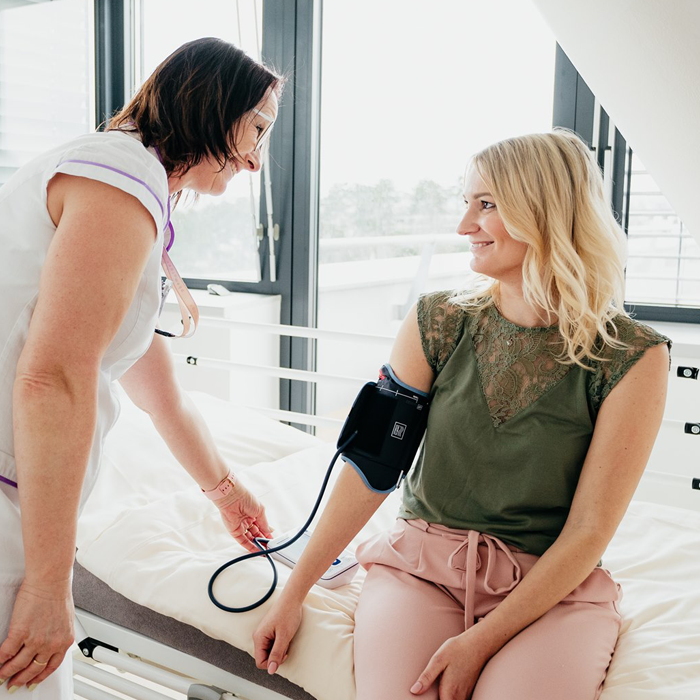
Prelievo degli ovuli
Al termine della terapia farmacologica, circa 12 giorni dopo, tornerete nella nostra clinica per il prelievo degli ovociti.
1 mese a casa
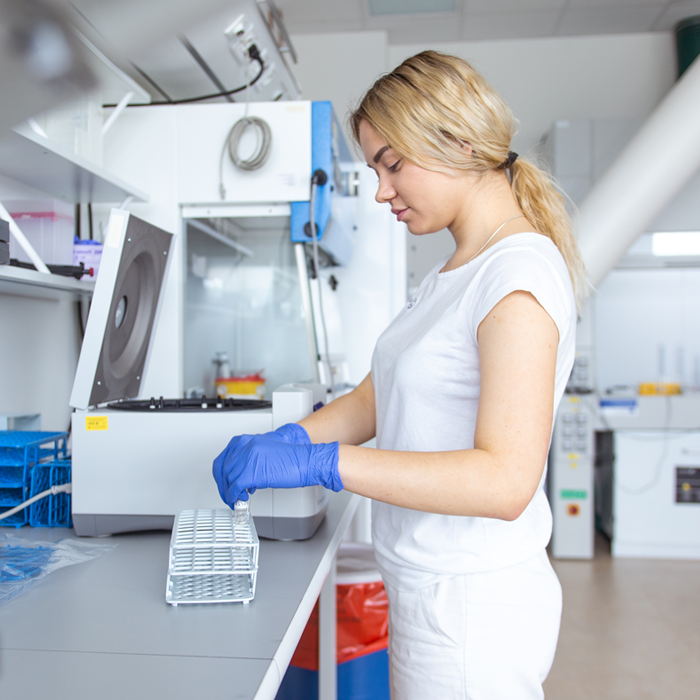
Metodi che aumentano il successo del trattamento, PGT
Feconderemo i vostri ovuli con lo sperma del vostro partner e, se necessario, effettueremo anche il test genetico dell’embrione (PGT).
1 giorno in clinica

Embryotransfer
I risultati del PGT saranno disponibili entro 3 settimane; una volta disponibili, potremo procedere al trasferimento dell’embrione più vitale.
Il 99% delle coppie ottiene la gravidanza entro 4 cicli di FIVET.
Circa 7 coppie su 10 hanno bisogno di un solo ciclo di FIVET per ottenere una gravidanza.
Tuttavia, il tasso di successo della FIVET è molto individuale. Molti fattori giocano un ruolo importante: la salute generale, l’età, ma anche lo stato mentale.
Selezioniamo i donatori in base a criteri rigorosi. Sono sottoposti a tutti gli esami più importanti e, naturalmente, alla compatibilità genetica con la donna della coppia in trattamento, alla compatibilità dei gruppi sanguigni e alla somiglianza fisica tra donatore e partner.
Il trattamento di fecondazione in vitro con gameti donati è uno dei nostri programmi principali di cui ci stiamo impegnando fin dalla nascita di Repromeda.
Sarete seguiti da un team dei professionisti esperti e guidati durante l’intero trattamento da un unico coordinatore, che potrete contattare in qualsiasi momento.
Non vi faremo aspettare inutilmente. Siamo in grado di iniziare il trattamento senza ritardi per aiutarvi a raggiungere il bambino dei vostri sogni nel più breve tempo possibile. Chiamateci o inviateci un’e-mail per fissare una consulenza non vincolante.
E fate il primo passo nel vostro viaggio per avere un bebè. Il medico discuterà con voi tutto ciò che vi interessa e vi suggerirà il passo successivo.
La consultazione iniziale è la porta d’accesso al trattamento di FIVET e dura circa 120 minuti.
Dopo aver fissato un appuntamento tramite il modulo di contatto, sarete contattati dal nostro coordinatore di lingua inglese che discuterà di tutto ciò che vi interessa. Non è necessario scegliere la data dell’appuntamento in base al ciclo mestruale, potete arrivare in qualsiasi momento. Non è necessario portare all’appuntamento i risultati di altri esami.
Vi consigliamo di venire entrambi al consulto
Per saperne di più sul consulto iniziale
Per le donne, ci concentriamo principalmente sull’ecografia pelvica, sui test ormonali e sui test genetici.
La donazione di cellule sessuali nella Repubblica Ceca è rigorosamente anonima. Pertanto, donatori e riceventi non possono identificarsi reciprocamente. Selezioniamo la donatrice adatta a voi in base al vostro gruppo sanguigno e al fattore Rh. Cerchiamo anche la massima corrispondenza in termini del colore dei capelli e degli occhi, altezza o anche tratti della personalità e interessi personali.
L’intero processo del ciclo OD, dalla consultazione con il medico al trasferimento degli embrioni, dura circa 4 mesi.
Ogni ciclo di FIVET comprende una stimolazione ormonale, che fa maturare nelle ovaie della donna un numero maggiore di ovuli rispetto a un ciclo naturale.
La stimolazione inizia il 2° o 3° giorno del ciclo mestruale e dura in totale 10-12 giorni. L’applicazione dei farmaci di stimolazione non è complicata. L’infermiera vi aiuterà con la prima dose e potrete facilmente gestire le successive a casa.
Per il prelievo utilizziamo un ago molto sottile che, grazie al diametro significativamente più piccolo della punta, penetra più delicatamente nei tessuti e quindi riduce al minimo il rischio di complicazioni.
Il prelievo avviene a stomaco vuoto in anestesia generale che di solito non dura più di 10 minuti.
Dopo l’intervento si rilassa un puo e poi la paziente dopo circa un ora puo tornare accompagnata a casa
Gli ovuli prelevati vengono poi fecondati il giorno stesso e diventano embrioni.
The embryologist evaluates the quality of the eggs and fertilizes each of them with one sperm. Fertilization is performed using active micromanipulation methods (ICSI, PISCI), which significantly increase the embryo formation success rate.
After fertilization, we monitor the embryos and make sure they develop properly. The embryo is cultured for 5 to 6 days to the blastocyst stage. The best embryo care is provided by the MIRI Time-Lapse Incubator.
Maggiori informazioni sulla fecondazione e la coltura degli ovociti
La crioconservazione, cioè il congelamento degli embrioni, consente di conservare gli embrioni per un uso futuro.
Gli embrioni congelati possono essere conservati per diversi decenni, scongelati e poi trasferiti nell’utero.
In caso del fallimento della FIVET o se si desidera avere un’altra gravidanza, non è poi piú necessario sottoporsi nuovamente al prelievo dei ovuli e spermatozoi.
Per congelare gli embrioni utilizziamo la tecnica più moderna, chiamata vitrificazione. Durante questo processo, gli embrioni vengono rapidamente raffreddati a una temperatura finale di -196 °C in pochi secondi.
Il trasferimento dell’embrione avviene tramite una sottile cannula attraverso la cervice nell’utero.
Il trasferimento è di solito completamente indolore e cosí lei con il suo partner potete godervi il momento in cui può nascere una nuova vita.
Dopo il trasferimento, riposatevi, assiguratevi di stare al vostro agio e applicate i farmaci consigliati dal medico. Se non vi vengono le mestruazioni entro 14 giorni dal trasferimento del embrione, potete fare un test di gravidanza a casa.
E fate il primo passo nel vostro viaggio per avere un bebè. Il medico discuterà con voi tutto ciò che vi interessa e vi suggerirà il passo successivo.
In un terzo dei casi, l’infertilità è dovuta a un fattore maschile, in un terzo a un fattore femminile e nell’ultimo terzo a un fattore combinato.
Nello specifico, possiamo dire che negli uomini si tratta per lo più dei parametri spermiografici scadenti, in particolare un basso numero dei spermatozoi e una scarsa motilità o morfologia (forma) degli spermatozoi.
Nelle donne sono coinvolti nell’infertilità i disturbi dell’ovulazione (maturazione e rilascio dell’ovulo), la scarsa qualità dell’ovulo, l’endometriosi, l’ostruzione tubarica, le aderenze nella zona delle ovaie e delle tube di falloppio.
Possono anche essere presenti alcune anomalie genetiche in entrambi i partner che non consentono un corretto sviluppo dell’embrione e causano infertilità o aborti ripetutivi.
Per sottoporsi alla procreazione assistita, una donna ha bisogno della firma del suo partner, che non deve essere necessariamente il suo marito legale. Allo stesso tempo, la donna non è obbligata a nominare quest’uomo come padre del bambino dopo la nascita.
Na základě zákona je možné provádět metody asistované reprodukce do dne 49. narozenin ženy. Zdravotní pojišťovny vám metody a postupy spojené s IVF proplatí do 40. narozenin.
Il consulto con il nostro medico è il primo passo per un trattamento con successo. Durante questo colloquio il medico discuterà con voi la vostra storia familiare e personale, l’andamento degli esami che avete già effettuato e l’andamento degli esami e dei trattamenti che dovete ancora ricevere. Il medico vi informerà anche sui costi e sulle possibilità dei rimborsi da parte della vostra assicurazione sanitaria. Alla consultazione dovete partecipare tutte due – sia uomo ch ela donna.
Offriamo procedure e metodi specializzati che aumentano significativamente il tasso di successo del trattamento e possono abbreviare il vostro percorso verso la nascita di un bambino.
L'acronimo MOON sta per Mature Oocytes Only, che si può tradurre vagamente come "solo ovuli maturi". Si tratta di un esame dettagliato del grado di maturità degli ovociti in luce polarizzata, al fine di determinare correttamente il momento della fecondazione.
Terreno contenente l'importante ormone della crescita GM-CSF. Aiuta l'embrione ad assorbire i nutrienti e lo protegge dallo stress cellulare e dall'apoptosi.
L'incubatrice MIRI TL offre agli embrioni le migliori cure, il miglior comfort e il miglior spazio. Gli embrioni di ogni coppia vengono coltivati separatamente in una delle 12 camere riscaldate.
Un esame che prevede tre test su un campione di rivestimento uterino. L'esame dettagliato dell'ambiente uterino e la determinazione del momento ottimale per l'inserimento dell'embrione possono essere un passo molto importante per chiarire la causa dell'infertilità.
Il test è destinato a tutte le donne che hanno avuto un piccolo numero di embrioni recuperati durante un trattamento con tecniche di riproduzione assistita o che hanno ripetuti fallimenti di impianto di embrioni.
Glue è uno speciale terreno di coltura contenente ialuronano che funge da "colla".
Terreno di coltura contenente ormone della crescita che non solo aiuta l'embrione a svilupparsi meglio, ma anche a comunicare con la parete uterina. Aumenta le possibilità di successo del attaccamento dell'embrione.
Cerchiamo le giuste connessioni che vi porteranno alla destinazione desiderata.
Siamo qui per voi
sono nati grazie a noi.
con una malattia rara che abbiamo aiutato
Ci basiamo su anni di esperienza e sappiamo che ogni storia è diversa e ognuno merita un approccio comprensivo e individuale.
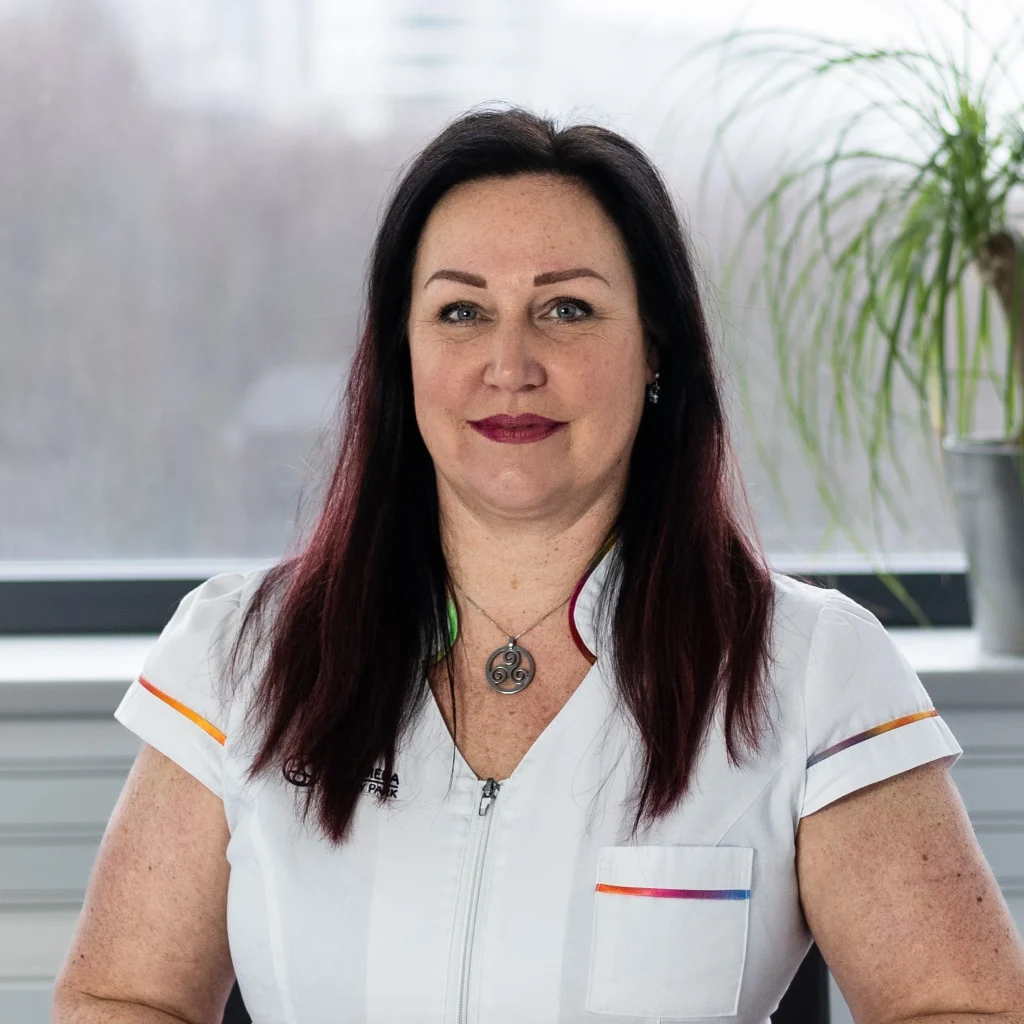
Capo infermiera
mjanickova@repromeda.cz
+420 702 247 322
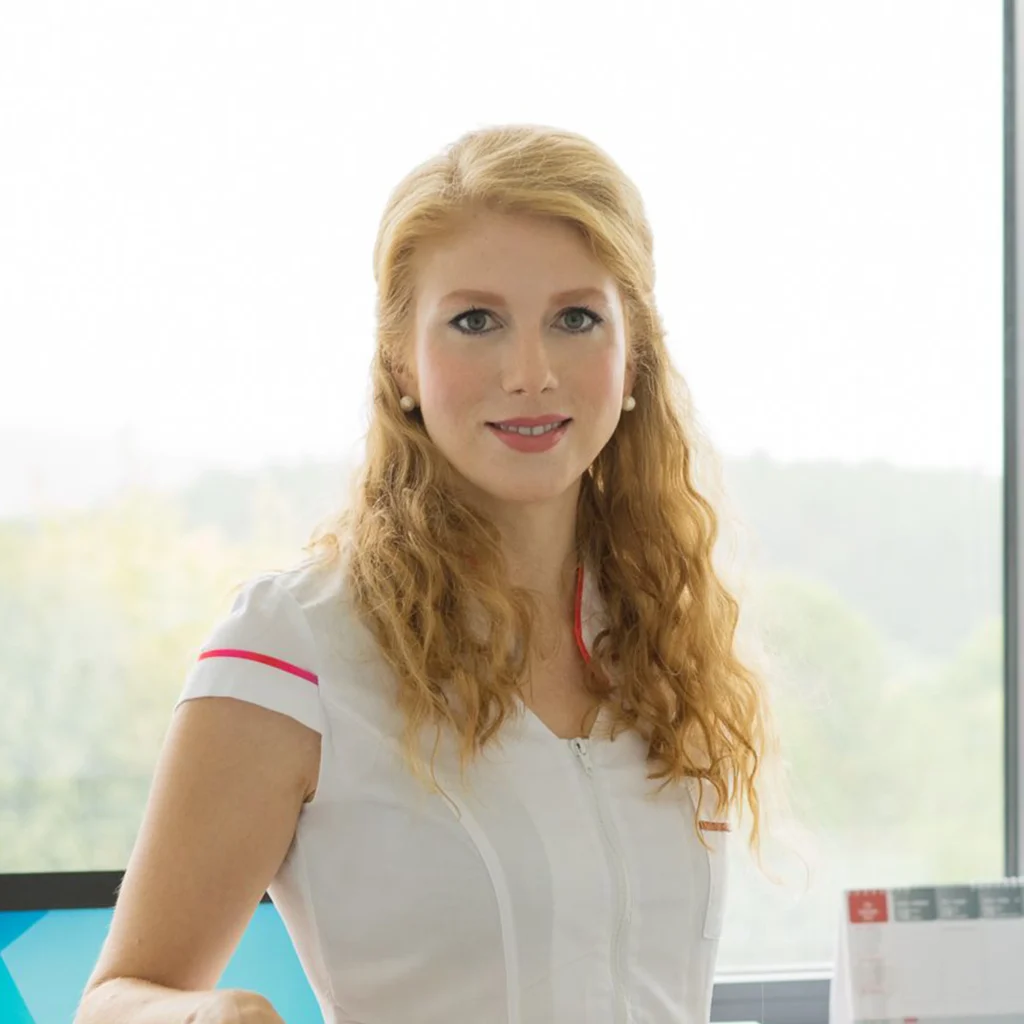
Infermiera
bsobova@repromeda.cz
+420 607 001 671
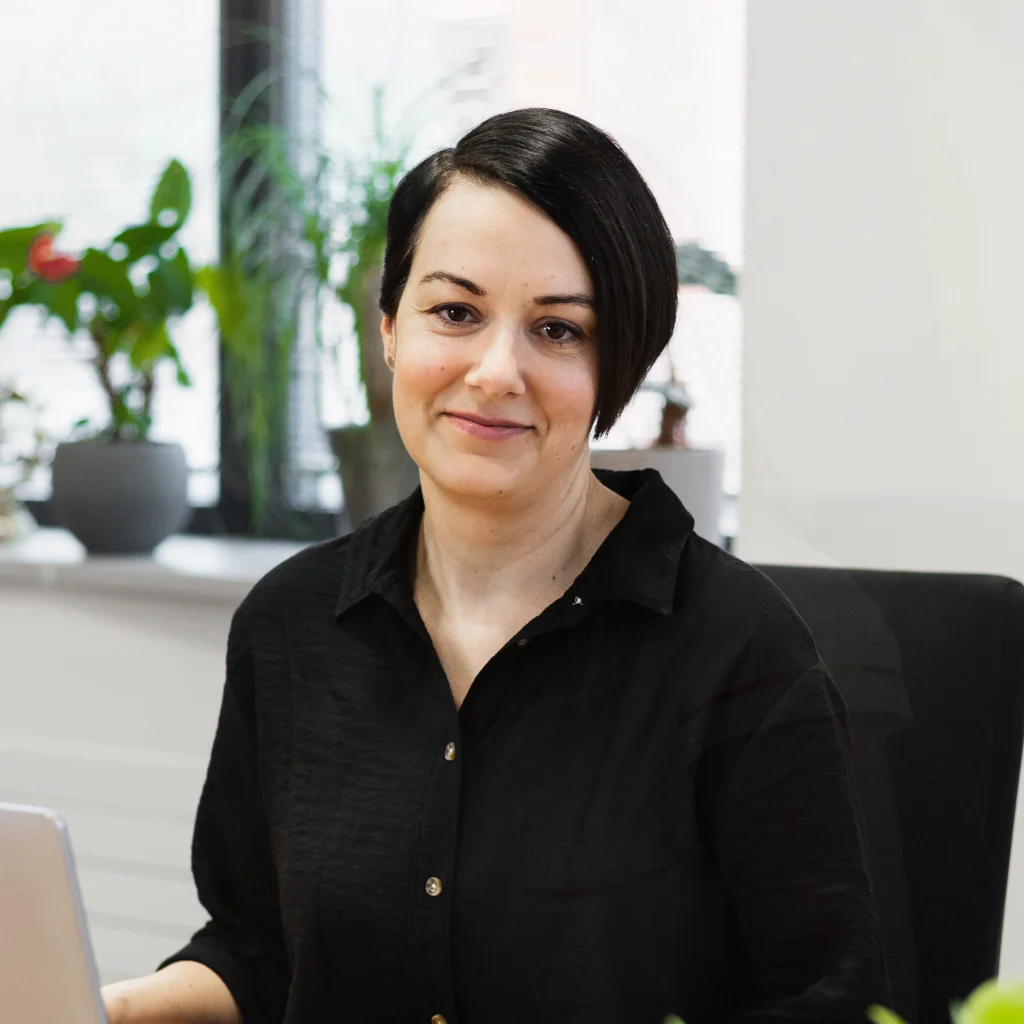
Infermiera
dkochova@repromeda.cz
+420 722 972 193
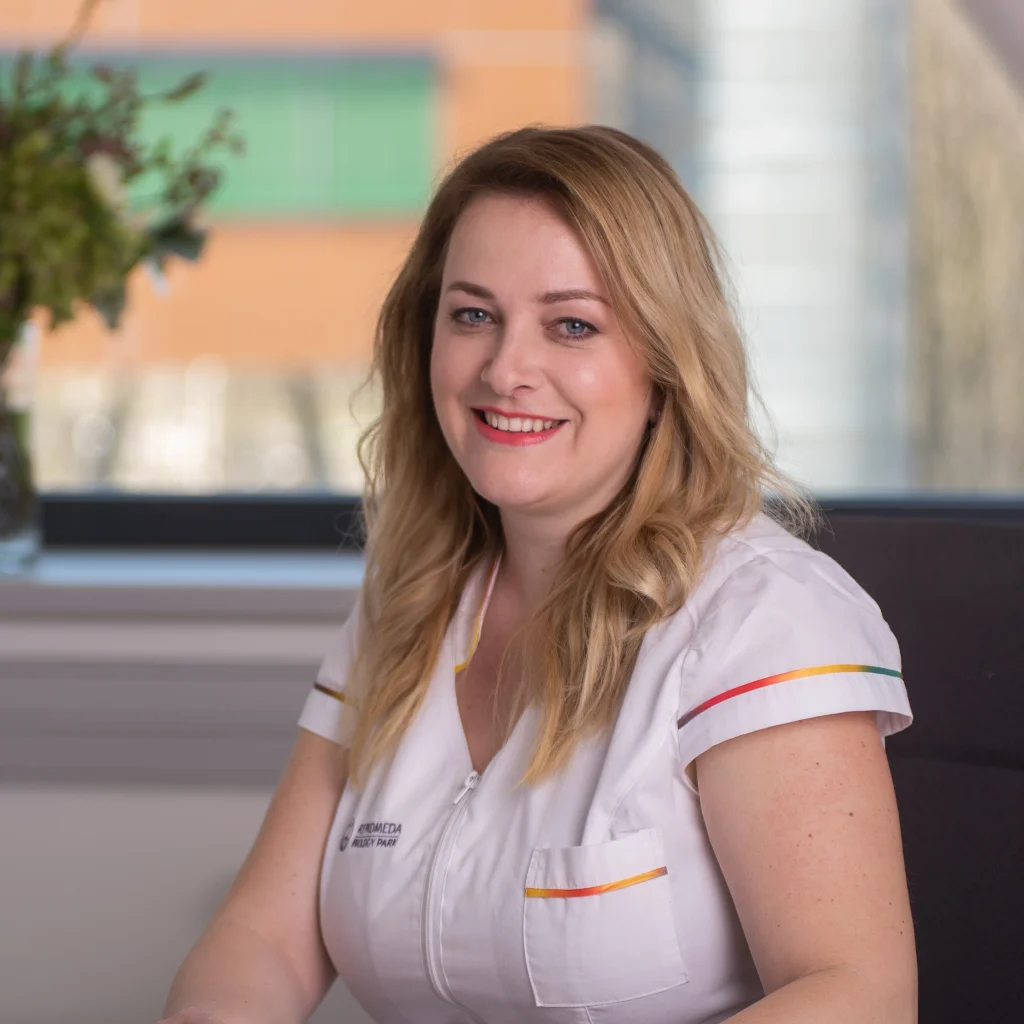
Infermiera
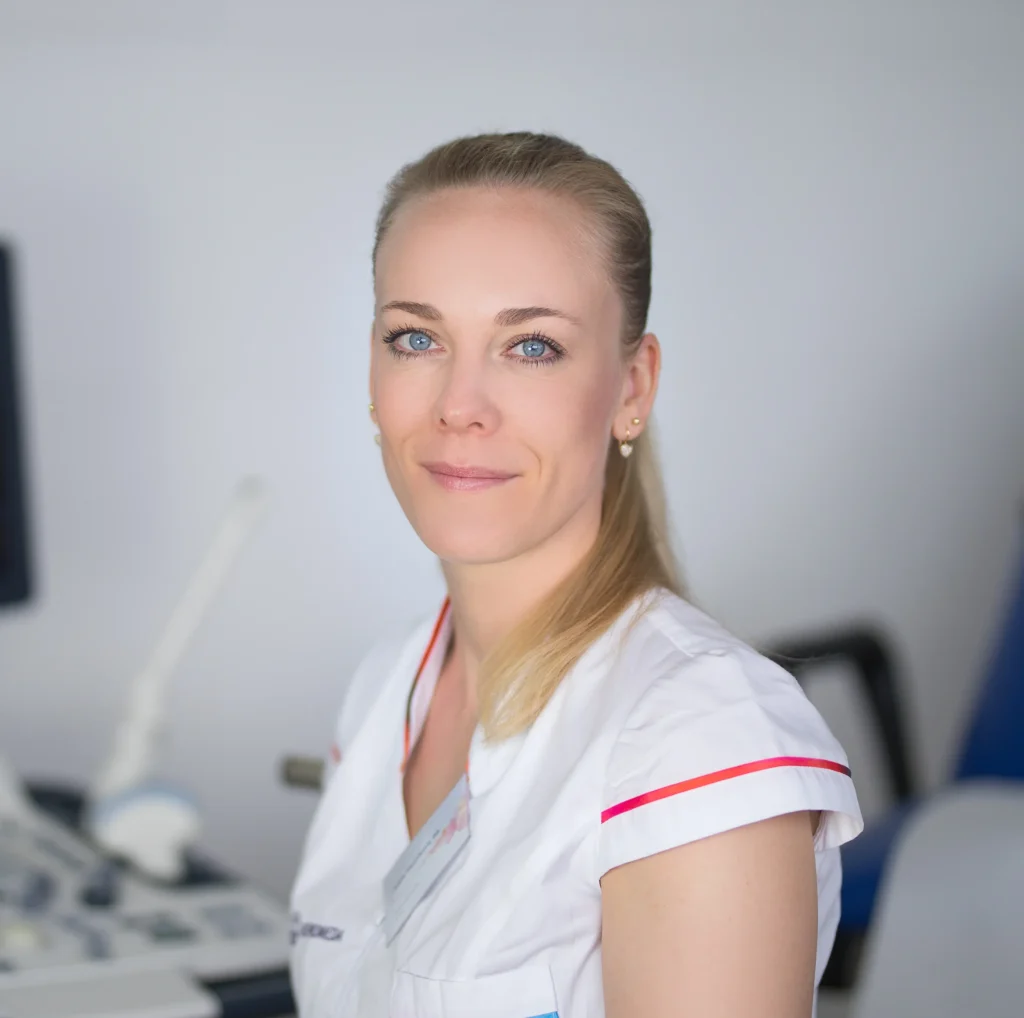
Infermiera

Infermiera
E fate il primo passo nel vostro viaggio per avere un bebè. Il medico discuterà con voi tutto ciò che vi interessa e vi suggerirà il passo successivo.
Le vostre domande troveranno risposta dal lunedì al venerdì, dalle 7.00 alle 18.00.
Alle vostre domande rispondiamo dal lunedì al venerdì, dalle 7.00 alle 15.00.
Le vostre domande troveranno risposta dal lunedì al venerdì, dalle 7.00 alle 18.00.
View on map
Alle vostre domande rispondiamo dal lunedì al venerdì, dalle 7.00 alle 15.00.
View on map
Before you go home, you and the coordinator will select a suitable sperm donor. If a woman takes the PANDA genetic test, the donor will not be selected until 4 weeks after the results are received to ensure compatibility.
All donors undergo genetic testing and repeated tests for sexually transmitted diseases. When selecting, we take into account the matching blood group and Rh factor of the donor and recipient and the physical similarity of the donor and recipient. If you wish, it is also possible to focus on character traits and interests.
Donors at our clinic must meet the following requirements:
After the end of the hormonal stimulation, it is time to collect the eggs, the so-called puncture. It is performed on an empty stomach under general anesthesia and usually takes no more than 10 minutes.
The contents of the follicles are removed by the doctor using a puncture needle under ultrasound control. For egg collection, we use a very thin needle, which, thanks to the significantly smaller diameter of the tip, is gentler when penetrating the tissues and thus minimizes the risk of complications.
In the collected follicular fluid, embryologists then search for eggs that are fertilized the same day and become embryos.
After the collection, you will have a short nap and rest. You can also have tea and something to eat. In just one hour after the collection, you can go home accompanied and return to your normal activities. We do not recommend driving the day after anesthesia.
When and how will the egg collection take place?
The doctor determines the exact day of collection based on ultrasound examinations. Ovitrelle must be applied 34 to 36 hours before the puncture. Ovitrelle is a laboratory-made hormone that is injected into the fold of the skin in the lower abdomen. You don’t have to worry about forgetting – we’ll send you an SMS notifying you that it’s the right time.
What regimen should be followed before egg collection?
Do not eat, drink or smoke from midnight before the collection. Then come to our clinic on the morning of the puncture day.
What are the advantages of using a thin needle?
The Kitazato brand needle we use for puncture has a tip diameter of only 0.912 mm (in contrast to the commonly used 1.149 mm). For female patients, using this needle is safer and less painful. Less consumption of analgesics and anesthetics also increases the comfort of the treatment. Laser treatment of the needle tip ensures safer access to the follicle and less resistance from the surrounding tissue.
We then freeze the eggs so that they are ready for use on the day we receive the sperm from the donor.
Hormonal stimulation of a woman causes a higher number of eggs to mature in the ovaries than in a natural cycle. It is done by injecting medication into the lower abdomen. Application of drugs is simple and painless.
For stimulation, we use only modern drugs that are gentle on your organism and that increase the success of the entire treatment.
We start the stimulation on the 2nd to 3rd day of the menstrual cycle and it lasts 10 to 12 days in total. The application of stimulant drugs is not complicated. A nurse will help you with the first dose, you can easily handle the next one at home.
During the stimulation, you will have regular check-ups where the doctor will use ultrasound and blood tests to check that everything is going smoothly. You can have ultrasounds at your local gynecologist or at our clinic.
For many years, we have been using the high-quality preparation Gonal F for hormonal stimulation, which is applied in the form of a pen and is popular for its convenient application and high efficiency.
See how to apply medication:
Isn’t it all a waste of time? Before I get the results, I can already undergo IVF and be pregnant soon.
We believe it’s just the opposite. Our goal is to save you time and money. We don’t want to expose you to months of unnecessary uncertainty and unsuccessful pregnancy attempts. In addition, sometimes these attempts end in an early miscarriage, which means another loss of time that you need for regeneration, both psychologically and physically. We try to perform all tests in the shortest possible time and, based on the results of clinical and laboratory examinations, recommend a suitable procedure directly for you.
Does hormonal stimulation have a negative impact on the body?
The greatest hormonal burden on a woman’s body occurs during pregnancy. With hormonal stimulation associated with IVF treatment, hormone levels reach only a fraction of these values. If the stimulation of a woman is conducted correctly, it does not have negative effects on the organism.
What is hyperstimulation syndrome (OHSS)?
OHSS refers to an excessive response of the ovaries to hormonal stimulation. This condition is manifested by pain in the lower abdomen, which is caused by the enlargement of the ovaries and the formation of free fluid in the abdominal cavity. Nausea or vomiting and diarrhea may also occur. Regular and careful monitoring of the entire stimulation is the prevention of OHSS.
How often does hyperstimulation syndrome (OHSS) occur?
With the development of modern stimulant preparations, the risk of hyperstimulation syndrome (OHSS) has been significantly reduced. Now these cases occur in fractions of a percent.
Is hormone stimulation and injection painful?
Pen injections are given under the skin (just like insulin) and are not painful. Towards the end of the stimulation, you may feel pressure in your lower abdomen like before your period.
Why do supplements for stimulants vary so much?
In addition to recombinant preparations that are produced in the laboratory, there are also preparations of urinary origin that are obtained from the urine of menopausal women.
These are highly purified drugs, but they do not guarantee the quality of stimulation with the reliability and precision we want to offer in our workplace. Surcharges for urinary preparations are an order of magnitude lower, but so far no clinical study or our experience has convinced us to recommend urinary preparations as the first choice.
What day is the first day of the cycle?
This is the first day of menstruation, i.e. heavy menstrual bleeding. Light bleeding is not considered the beginning of the cycle. If you start bleeding in the evening after 8 p.m., then the first day of menstruation is considered the following day.
Why do I have to go for check-ups during stimulation?
The body’s reactions to stimulation can be individual – depending on your age, weight, egg supply and type of stimulation preparation. We therefore monitor everything carefully during it. During check-ups, the doctor monitors the response of the ovaries using an ultrasound examination and, if necessary, determines the level of hormones by taking blood.
After the transfer, enjoy peace and comfort and apply medication as recommended by your doctors. If you do not get your period within 14 days of the embryo transfer, you can take a pregnancy test at home. We will call you 14 days after the transfer to discuss the next steps.
If the test is positive, you will be invited for a blood test and an ultrasound scan.
Pregnancies resulting from assisted reproduction are good to monitor, especially in the beginning, so the first examinations will take place in our clinic until the fetal heartbeat is confirmed. If all is well, we will then refer you back to the care of your treating gynaecologist, where you will attend a pregnancy clinic.
Why can’t I take a pregnancy test until 14 days after the transfer?
During the course of IVF treatment, you are injected with a number of drugs that can skew the result towards either a false positive or a false negative. By taking the test after 14 days, you will save yourself the unnecessary stress that could arise from false results.
I can’t go to Repromedy for all my other checkups? I’m used to it.
Unfortunately, it can’t be. We would be happy to accommodate you, but we are not a registering gynaecological facility and cannot carry out pregnancy counselling. But we’ll stay in touch, so don’t worry. After the birth, we will ask you to fill in all the important information about the baby and if you wish, send us a reference or a photo of the baby. And who knows, maybe we’ll meet again in a few months or years. In short, we will be there for you whenever you need us.
One comma again. What am I supposed to do now?
Unfortunately, sometimes things don’t go the way we imagine and good news doesn’t come when we want it most. Don’t worry, you’re not alone. Unfortunately, even IVF treatment is not 100% successful. The success rate of IVF varies depending on various factors such as your age, health and mental state.
Do what you feel is right. Scream, cry, be silent, talk about it. Give space to all your feelings. But don’t blame yourself. If you would like to talk to a psychologist or our staff about this, we would be happy to help.
It was my first IVF failure, should I change my treatment?
In case of first or second IVF failure, nothing happens. You don’t have to change anything. But if you’re wondering what else you can do to make sure you get two commas on your pregnancy test next time, we have some tips for you.
Try the beREADY endometrial receptivity test to find out your exact implantation window and determine the ideal time for your next transfer. You can also try the EndomeTRIO test, which, like the beREADY test, determines the implantation window. In addition, however, it also analyses the bacterial balance of the endometrium and detects bacteria causing chronic inflammation.
Do you believe in a holistic approach? So are we. Alternative medicine may not be what will always guarantee motherhood. However, it is a suitable complement to the methods of Western medicine and can really improve your health significantly.
More about alternative methods
We’ve failed repeatedly, now what?
Your doctor may offer you the option of treatment using donated sex cells. We know that this decision takes time and that you will need to think carefully about it. Take your time. Everything will come when the time is right.
In cycles where preimplantation genetic testing (PGT) is planned, the 5. – 6th of development, a few cells are taken from the embryo and this sample is tested in the genetic laboratory. Meanwhile, the embryos are vitrified (frozen).
Cryopreservation, the freezing of embryos, allows embryos to be stored and used in the future.
Frozen embryos can be stored for several decades, thawed and then transferred to the uterus.
In case of a failed IVF process or if you wish to have another pregnancy, you do not have to choose a donor and sperm collection again.
To freeze embryos, we use the most modern technique called vitrification.
During this process, the embryos are rapidly cooled to a final temperature of -196 °C within seconds.
Why do embryos actually freeze?
Due to the very high success rate, we only introduce one embryo at a time during embryo transfer. This is mainly to reduce the likelihood of multiple pregnancies, which tend to be risky. The remaining embryos that meet the conditions for quality preservation in a frozen state can be frozen for later use – so-called cryoembryo transfer.
Are thawed embryos really of the same quality as fresh ones? Don’t we have to worry about it getting damaged somehow?
Unlike the previously used slow freezing method, vitrification does not produce any ice crystals that could damage the cells. In addition, the cells are stored in special media that protect them from external influences. Even after thawing, the embryos are in excellent condition.
The embryo is transferred through a thin cannula through the cervix into the uterus.
The procedure is short, usually painless and performed to relaxing music. You can be with your partner for the procedure.
Transferring the embryo into the uterus is one of the most important steps in IVF treatment. In simple terms, it can be described as the transfer of the embryo through a thin cannula through the cervix into the uterus. The procedure is short, usually painless and is performed in the transfer room with relaxing music. During the transfer, you can watch a video recording of the transfer of the selected embryo and your partner can also be present during the procedure.
Embryos are ideally introduced into the uterus at the blastocyst stage. This is the 5th-6th day after the eggs are fertilized by sperm. One option is to perform the so-called. fresh transfer, the other option is to freeze these embryos and transfer them in the next cycle (cryoembryo transfer – KET). It is the second option that we prefer at Repromeda.
Acupuncture is a suitable complement before and after the transfer. Before the transfer, you will be pleasantly attuned and the pelvic area will be relaxed for easier embryo insertion. After the transfer, acupuncture is used to work with the circulation of blood to the uterus to promote nutrition and proper development of the embryo. In addition, you will relax pleasantly.
It may happen that despite a series of tests showing that nothing prevents the embryo from attaching, it repeatedly fails to attach. The problem may be caused by a uterine lining that may not be sufficiently prepared for the transfer. The beReady or EndomeTRIO test can help you in this regard.
Why do you prefer cryoembryo transfer or KET in Repromeda?
The main reason is the higher success rate of treatment. Why is that? The timing of the transfer to the woman’s next natural cycle, which is no longer burdened by hormonal stimulation (necessary for egg retrieval), contributes to a higher success rate. In the following cycles, we are usually able to achieve a better readiness of the uterine lining to receive the embryo. Another reason is the use of preimplantation genetic testing of embryos, which we currently perform on most of our patients. In this case, KET is the only option for time reasons. During the delayed transfer, we examine the embryos in our genetic laboratory. In the following cycle, we transfer the most promising of them.
Is embryo transfer painful?
For most women, this is an outpatient, painless procedure. In some women, the cervix may be narrowed because of a developmental defect of the uterus or as a result of inflammation or surgery. In this case, the transfer may be slightly uncomfortable.
Why do you transfer only one embryo during embryo transfer at Repromeda?
Because we know that transferring two or more embryos does not increase the likelihood of pregnancy, it only increases the likelihood of multiple pregnancy. By transferring one embryo, we prevent multiple pregnancies, which pose a risk to both the woman and the children.
The final decision on the number of embryos to be transferred is made by the couple in consultation with their doctor. However, we are very happy that the average number of transferred embryos in our clinic is 1.0. Our goal is not only your pregnancy, but a healthy baby in your arms. Only in this way can we ourselves be satisfied with our work.
Can I have twins after a single embryo transfer?
In the case of a single embryo transfer, multiple pregnancies can only occur in cases of identical twins resulting from the division of the original single transferred embryo.
How likely am I to get pregnant?
The probability of pregnancy after the transfer of one PGT-tested embryo is up to 58%. In most cycles, however, more viable embryos are obtained. Approximately 7 out of 10 couples only need one IVF cycle to achieve pregnancy. During 4 IVF cycles 99% of couples get pregnant.
The embryologist evaluates the quality of the eggs and fertilizes each of them with one sperm.
Fertilization is performed by active micromanipulation methods (ICSI, PISCI), which significantly increase the success rate of embryo formation.
Once we have the sex cells, we move to the embryology lab. This is where the so-called artificial insemination takes place. The embryologist assesses the quality of the eggs and then fertilises each egg with one sperm. Fertilization is nowadays standardly performed by active micromanipulation methods (ICSI, PICSI), which significantly increase the success rate of embryo formation.
We offer our clients a SpermPacket (for fertilization) containing a suitable combination of methods. This package includes ICSI or PICSI and optimal sperm selection, which is performed in two ways – MACS or Fertile chip.
The method of selecting the optimal sperm is based on previous laboratory tests, patient needs and current spermiogram parameters. The MACS method removes defective sperm with fragmented DNA from the ejaculate sample. The Fertile chip method gently sorts out the sperm with the highest motility and viability.
After fertilization of the egg with sperm, embryologists monitor your embryos and care for their successful development. The embryo is cultured for 5 to 6 days to the blastocyst stage. We offer our clients the use of modern MIRI Time-lapse incubators. These incubators ensure the best care for the embryos, providing a separate space for cultivation while continuously recording their development via an integrated camera. Since there is no need to remove them from the incubator for microscopic examination, there is no variation in the parameters of the culture conditions.
In cycles where preimplantation genetic testing (PGT) is planned, the 5. – 6th of development, a few cells are taken from the embryo and this sample is tested in the genetic laboratory. Meanwhile, the embryos are vitrified (frozen).
What is classical or conventional IVF and why do we use it only minimally anymore?
This is a method in which eggs and sperm are placed in a “test tube” and waits to see if spontaneous fertilisation occurs without further intervention by an embryologist. However, this original method has a relatively low success rate and has been more or less replaced by the ICSI and PICSI methods.
What is the ICSI method?
The ICSI method is the most commonly used micromanipulation technique in which embryologists actively transfer one sperm into each egg.
Who is the PICSI method suitable for and how exactly does it work?
The PICSI method is suitable for you if the proportion of eggs fertilised by ICSI has been low in previous cycles, if the embryos have not developed optimally or if there has been a miscarriage. The main role in the PICSI method is played by hyaluronan, which is an important natural component of the egg envelope. The head of a mature sperm carries a specific receptor that allows it to bind to hyaluronan. In the PICSI method, the embryologist selects for micromanipulation fertilization those spermatozoa that show positive binding to the hyaluronan gel.
At Repromeda, we don’t believe in a one-size-fits-all approach. We believe that every couple is unique. Together, we will find the appropriate treatment for you with the least risk of complications and the greatest likelihood of success. However, to do this, we need to carry out several examinations at the outset.
During the examination, we mainly focus on ultrasound examination of the small pelvis, hormone testing and genetic testing.
Isn’t it all a waste of time? Before I get the results, I can already undergo IVF and be pregnant soon.
We believe it’s just the opposite. Our goal is to save you time and money. We don’t want to expose you to months of unnecessary uncertainty and unsuccessful pregnancy attempts. In addition, sometimes these attempts end in an early miscarriage, which means another loss of time that you need for regeneration, both psychologically and physically. We try to perform all tests in the shortest possible time and, based on the results of clinical and laboratory examinations, recommend a suitable procedure directly for you.
The initial consultation is the gateway to the entire IVF treatment. During the course of 2 hours, your doctor will discuss your family and personal history and go over all the tests you have already had. Based on this information, we will suggest a course of action. You will also learn the approximate cost.
At the consultation you will have the opportunity to ask questions about anything you want, so we recommend that you come along with your partner. You don’t have to worry about us overwhelming you with specialist terms; the doctor will explain everything in a clear and comprehensible manner.
Your treatment will be guided at all times by a strategic doctor, who ill help you with anything you need and answer any questions you might have. However, other equally experienced doctors may also carry out certain lesser procedures. Our daily coordinators will also be available to guide you through your treatment.